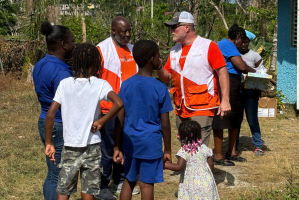Casey Anthony Trial: Caylee's Remains in Woods for Only 2 Weeks, Botanist Says
Back in court on Tuesday, the defense continued their case in the Casey Anthony trial after Chief Judge Belvin Perry, who was tired of the “gamesmanship” between attorneys, called for a recess on Monday.
The first witness to the stand was Orange County crime scene investigator Jennifer Welch, who had testified on several occasions previously. She had collected evidence in the wooded area where the remains of 2-year-old Caylee was found in December 2008.
Pictures of the wooded area, cleared of vegetation after recovering the toddler’s remains were shown to jurors. Welch explained that some vegetation was removed from the area because it was obstructing the investigators’ view.
Defense attorney Dorothy Clay Sims questioned as to whether or not Caylee’s remains were moved while vegetation was being removed from the scene. Welch could not recall moving any plant growth that was found on the skull.
The defense hoped to prove that the 2-year-old’s remains were moved prior to ending up at the crime scene and also shed doubt on the prosecution’s claim that Caylee’s remains had been in the wooded area since the summer of 2008.
Forensic botanist Dr. Jane Bock also took the stand Tuesday morning, testifying that Caylee’s remains could have been in the woods for as little as two weeks when they were discovered in December 2008.
Bock stated that she had examined the crime scene on Feb. 1, 2009, and also reviewed reports from Welch, medical examiner Dr. Jan Garavaglia, and the state of Florida’s plant expert.
By observing photos of the scene where the remains were found, she stated that the roots could have grown through the bones, skull, and a laundry bag in just two weeks, basing that time through the pattern of leaf litter or fallen leaves.
During cross-examination, however, prosecutor Jeff Ashton pointed out to the court that the photos Bock examined were not very reliable because they weren’t taken until February 2009, over seven weeks after the area was cleared of vegetation.
Showing Bock photos taken at the actual time of recovery, Ashton asked the botanist about the pattern of leaf litter, illustrating that some of the leaves in the photos were off the trees for longer than two weeks based on their varying levels of decay.
Ashton also revealed that the 2-year-old’s hip bone was buried in 4 inches of muck when her remains were found, which Bock responded could have been due to a dog or another animal burying the bone.
The state noted that in Bock’s previous deposition, she stated that she could not say when Caylee’s remains were placed in the woods. Bock admitted that the remains could have been in the woods for more than two weeks and that she had limited experience in studying roots growing into bones.
Dr. Richard Eikelenboom, a Dutch expert in “touch DNA,” took the stand next.
The state has argued since Monday that defense attorneys failed to disclose all of the material Eikelenboom was supposed to testify about, providing only a summary.
Agreeing with the prosecution, Judge Perry accused defense attorney Jose Baez for willfully violating discovery rules regarding the witness because he did not provide detailed reports about what the witness planned to testify to.
Judge Perry nonetheless allowed Eikelenboom as a witness in general DNA analysis, although Eikelenboom was not allowed to speak in regards to the DNA analysis of decomposition fluid found in the trunk of Casey’s car.
Casey, 25, could face the death penalty if found guilty of first-degree murder of her daughter, Caylee.
The defense maintains that Caylee accidentally drowned in her grandparents’ swimming pool, while the state claims that Casey suffocated her daughter with duct tape, placed her in the trunk of her car, and threw her body in the nearby woods.



























